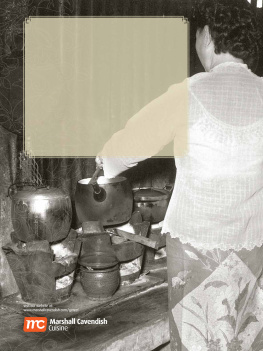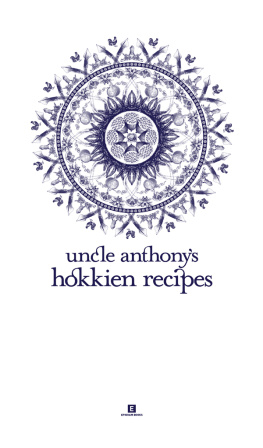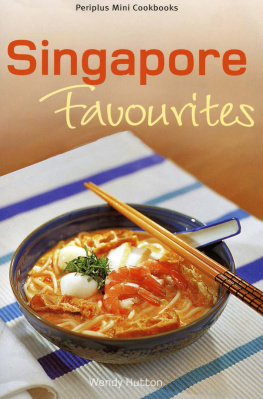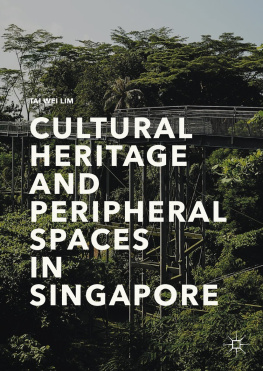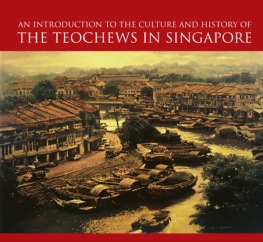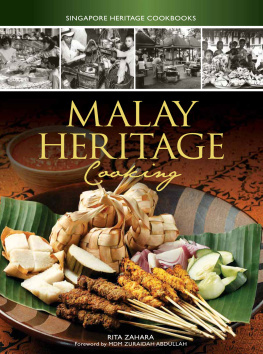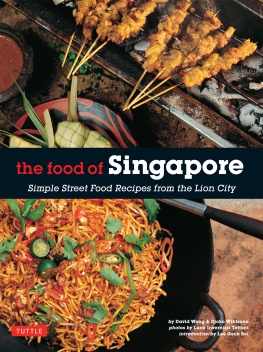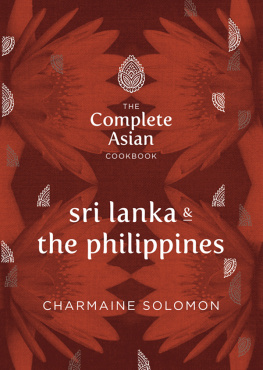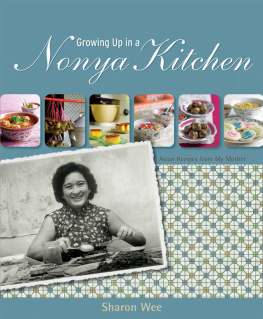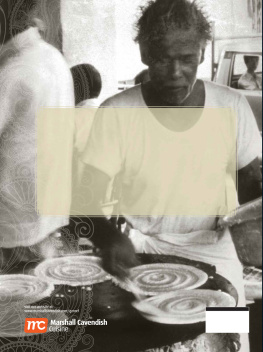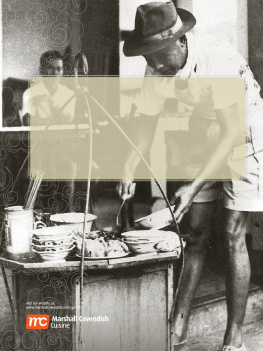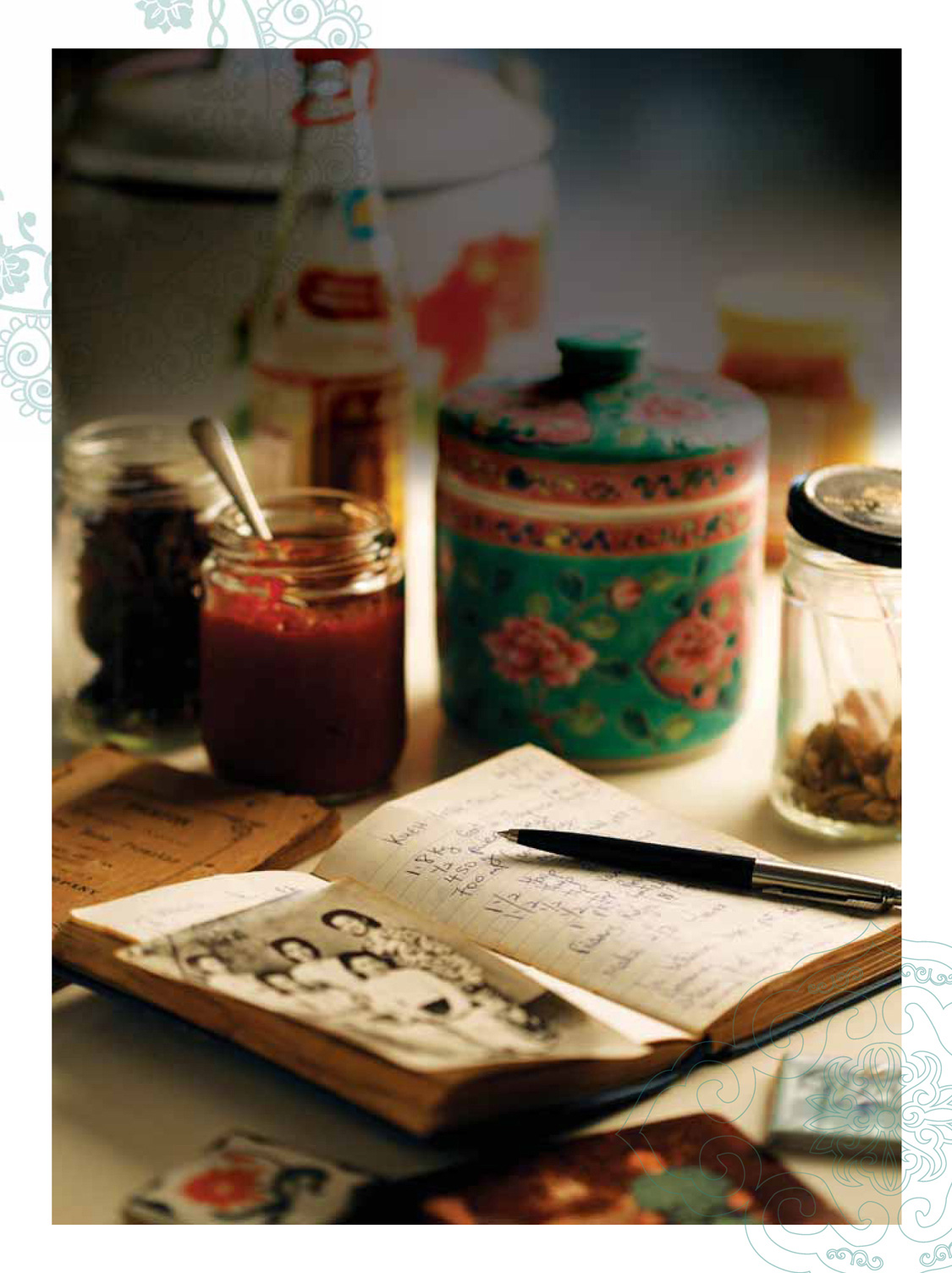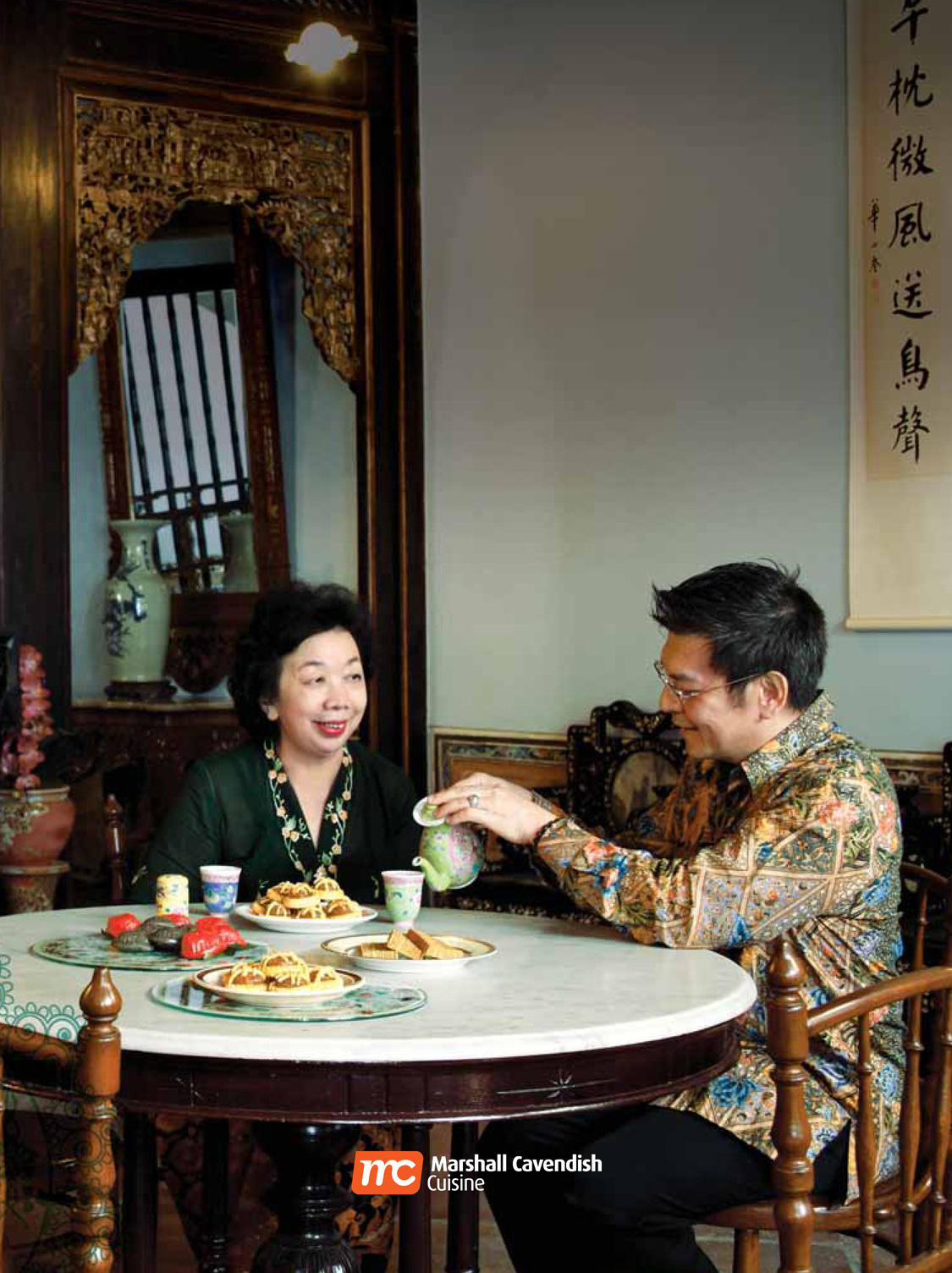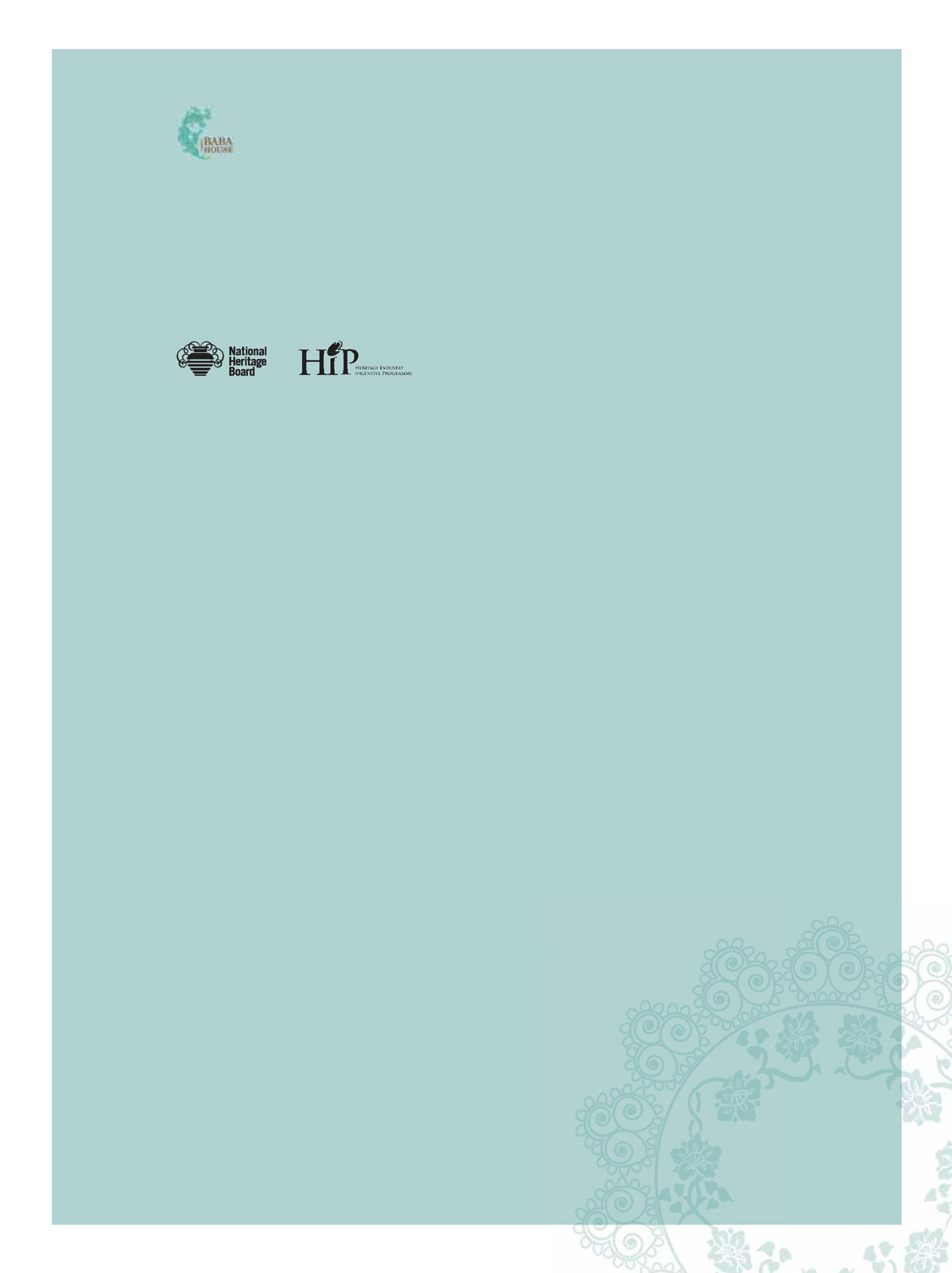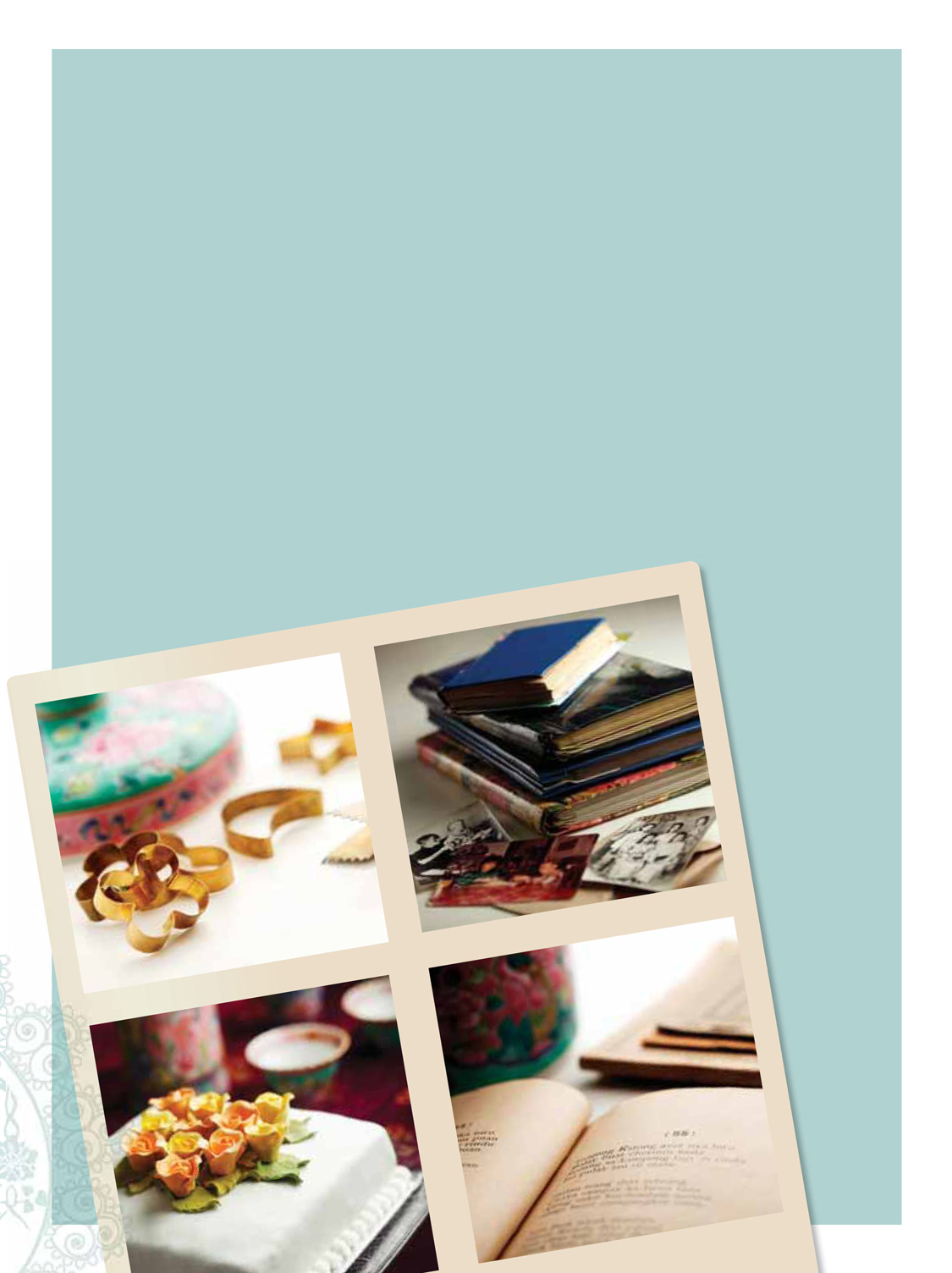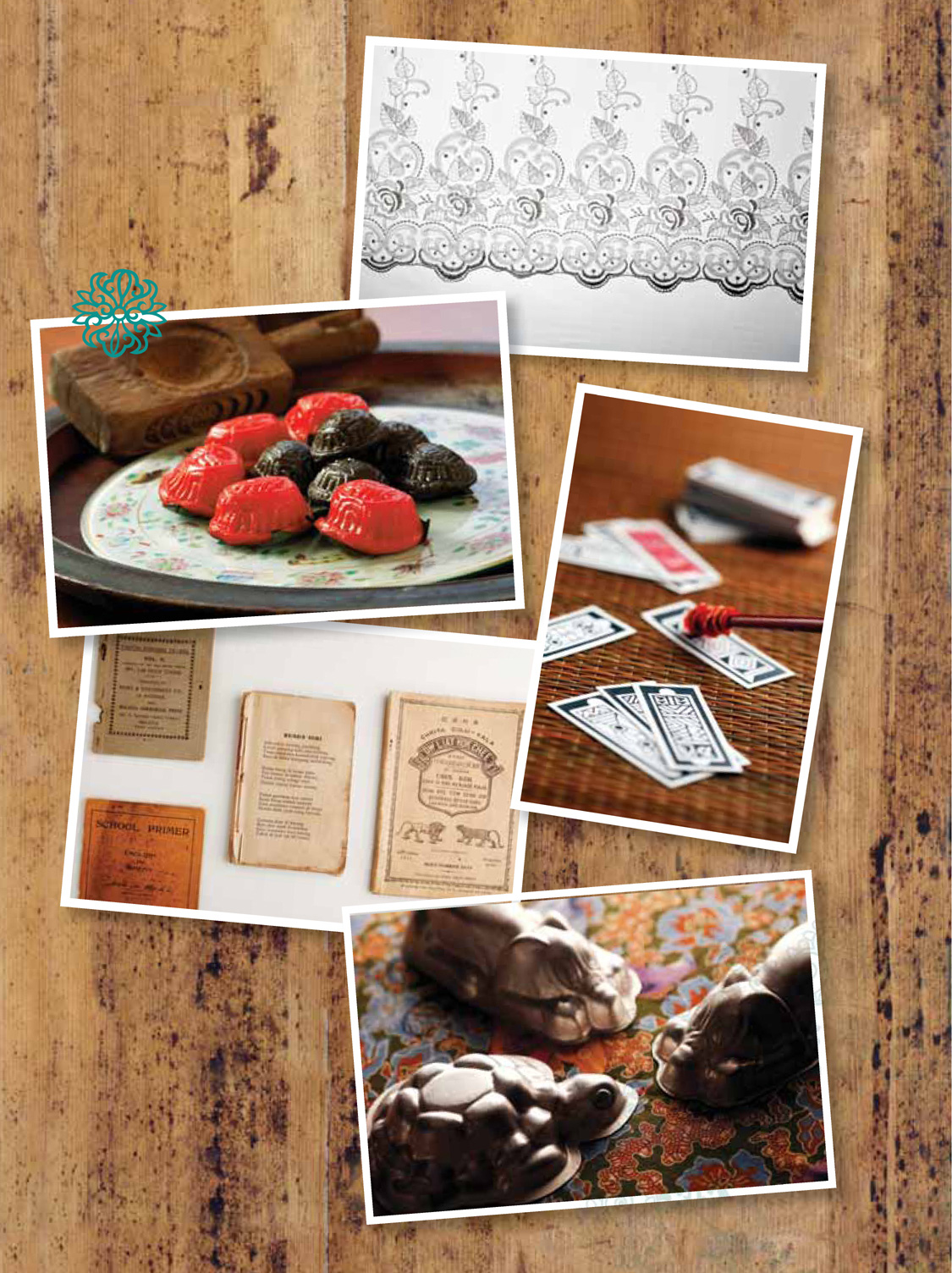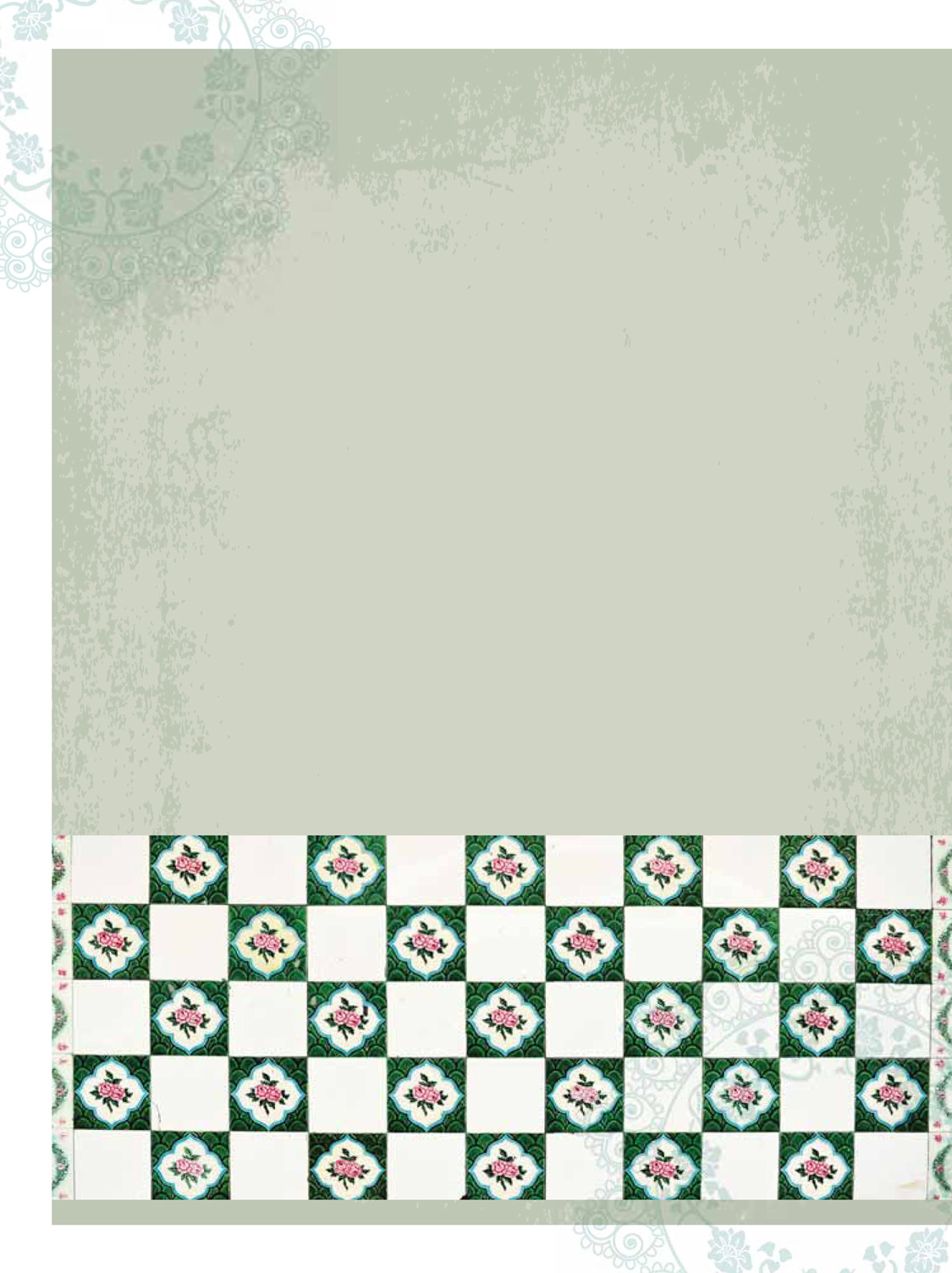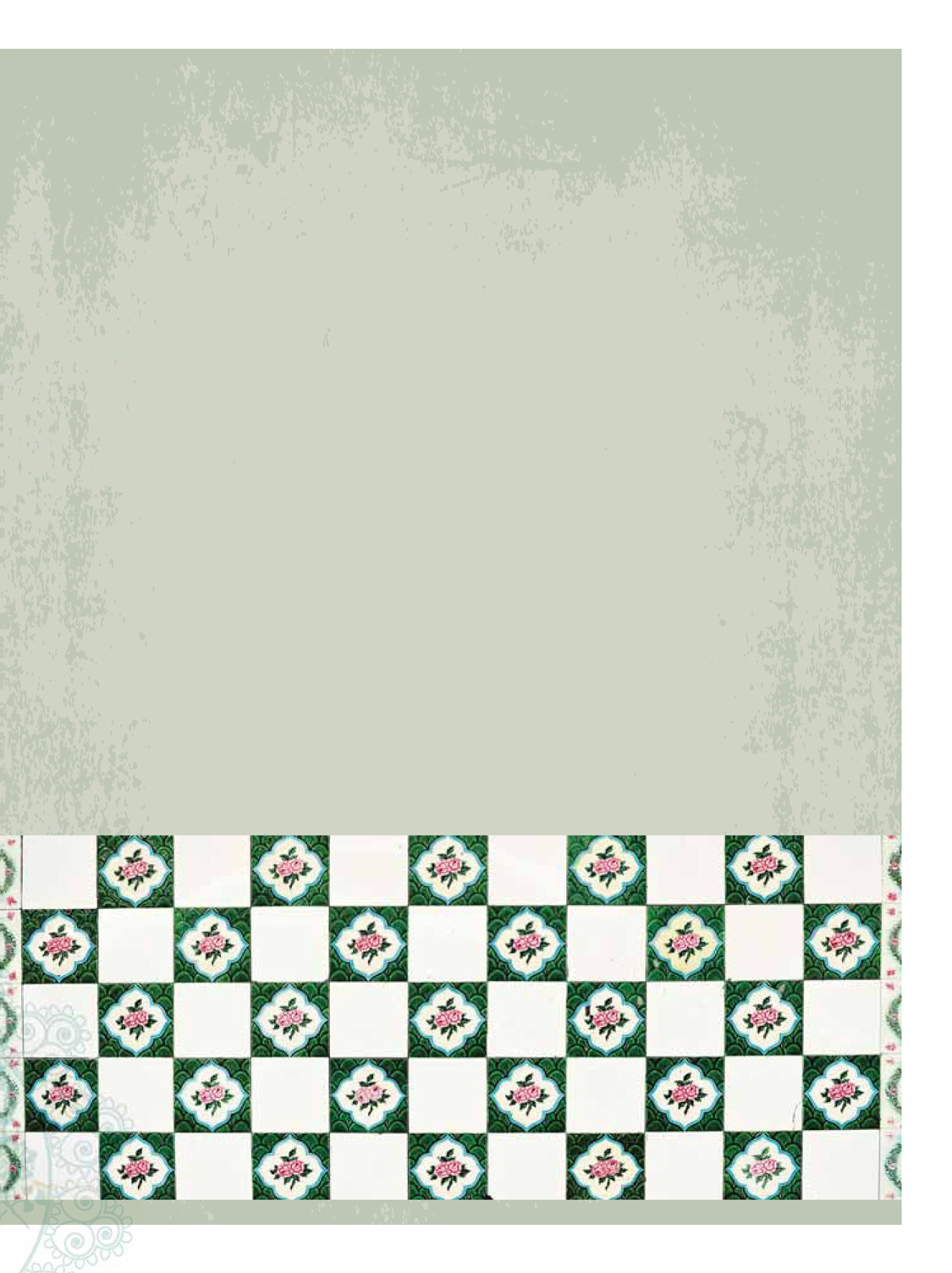SINGAPORE HERITAGE COOKBOOKS
PERANAKAN
HERITAGE
Cooking
SINGAPORE HERITAGE COOKBOOKS
PERANAKAN
HERITAGE
Cooking
PHILIP CHIA
Foreword by LEE KIP LEE
The Publisher wishes to thank NUS Baba House for their support in the production of this book.
Editor: Lydia Leong
Designer: Bernard Go
Photographer: Hongde Photography
Copyright 2012 Marshall Cavendish International (Asia) Private Limited
Reprinted 2013
This book is supported under the National Heritage Boards
Heritage Industry Incentive Programme (Hi2P)
Published by Marshall Cavendish Cuisine
An imprint of Marshall Cavendish International
All rights reserved
No part of this publication may be reproduced, stored in a retrieval system or transmitted, in any
form or by any means, electronic, mechanical, photocopying, recording or otherwise, without the
prior permission of the copyright owner. Request for permission should be addressed to the Publisher,
Marshall Cavendish International (Asia) Private Limited, 1 New Industrial Road, Singapore 536196
Tel: (65) 6213 9300 Fax: (65) 6285 4871 E-mail:
Online bookstore: http://www.marshallcavendish.com
Limits of Liability/Disclaimer of Warranty: The Author and Publisher of this book have used their best
efforts in preparing this book. The Publisher makes no representation or warranties with respect to
the contents of this book and is not responsible for the outcome of any recipe in this book. While the
Publisher has reviewed each recipe carefully, the reader may not always achieve the results desired
due to variations in ingredients, cooking temperatures and individual cooking abilities. The Publisher
shall in no event be liable for any loss of profit or any other commercial damage, including but not
limited to special, incidental, consequential, or other damages.
Other Marshall Cavendish Offices:
Marshall Cavendish Corporation. 99 White Plains Road, Tarrytown NY 10591-9001, USA Marshall
Cavendish International (Thailand) Co Ltd. 253 Asoke, 12th Flr, Sukhumvit 21 Road, Klongtoey Nua,
Wattana, Bangkok 10110, Thailand Marshall Cavendish (Malaysia) Sdn Bhd, Times Subang, Lot 46,
Subang Hi-Tech Industrial Park, Batu Tiga, 40000 Shah Alam, Selangor Darul Ehsan, Malaysia
Marshall Cavendish is a trademark of Times Publishing Limited
National Library Board, Singapore Cataloguing-in-Publication Data
Chia, Philip, 1960
Peranakan heritage cooking / Philip Chia. Singapore : Marshall Cavendish Cuisine, c2012.
p. cm. (Singapore heritage cookbooks)
Includes bibliographical references and index.
ISBN : 978 981 4435 09 3
1. Cooking, Peranakan. 2. Cooking, Singaporean. I. Title.
Series: Singapore heritage cookbooks.
TX724.5.S55
641.595957 dc22
OCN753307013
Printed in Singapore by KWF Printing Pte Ltd
DEDICATION
To my late nanny and adoptive mother, Lim Lian Neo, who doted on me and taught me how to prepare the essential rempahs of Peranakan cooking.
To my dearest late Auntie Alice, my mak-ko, who taught me how to cook. I will always remember those lessons.
To my most treasured friends, late Baba Lee Eng Liang who shared with me many old and forgotten recipes; Baba Tan Kim Guan and Auntie Rosie Gwee for sharing their treasured recipes and cooking tips, especially babi tohay.
It is a great privilege to have had them in my life to share their skills and impart their knowledge, which I now share with you. May this book be a reference point and a source of inspiration for you.
Philip Chia
CONTENTS
FOREWORD
Perhaps nothing expresses better the soul of a community than its cooking. For the Peranakans, it is also perhaps one of the most expressive and engaging aspects of the living heritage. Many things may have been relegated to the past, but the cooking has been kept alive and continues to evolve, mainly because of the passion and dynamism of a younger generation of chefs and food writers, and naturally also because of the interest of the community and of the general public in the flavours of Peranakan food.
Peranakan cooking expresses and celebrates the exuberant hybridity that is central to Peranakan identity. Ever since the Portuguese colonial era, the southern Chinese communities in the port towns have been exposed to the lifestyles of Malays from all over the archipelago, as well as of Europeans, Indians and Arabs, and over the centuries, it was impossible for these communities not to learn about, or be influenced by, the different cooking styles and ingredients. From China came sauces, bean curds, noodles, dumplings and certain types of vegetables; from the islands came the wide range of fragrant herbs, spices and roots. From India, there was the wide range of aromatic spice blends and methods of cooking, and from Europe, there was baking and a whole range of cakes and desserts, quaint colonial and Eurasian fusion recipes and dashes of Worcester sauce too. Not surprisingly, the Baba Malay vocabulary of ingredients is peppered with words that have Arab, Portuguese, English, Dutch, Malay and Hokkien origins.
Perhaps the one characteristic of Peranakan cooking that may be called unique is the refinement of the cooking process and the almost ridiculous number of steps required to put together a dish. Some have speculated that this was a way for a manipulative household matriarch
PERANAKAN HERITAGE
Cooking
to control her daughters and daughters-in-law. In this day and age, shortcuts have been taken by many modern chefs who claim there is little effect on the final product, although conservative cooks would disagree.
When I was young, the menus for different occasions were very specific. There were so many kinds of celebrations, from birthdays to funerals, which required different foods to be served in order to avoid any ill omens or inappropriate etiquette. For example, in the past, the mixed vegetable dish known as chap chye was used as an offering during ceremonies to commemorate the death anniversaries of ancestors. Therefore, traditionally it was never served at birthdays. Nowadays, such customs are no longer observed. However, to be honest, I never paid much attention to these things when I was young. Food for me was solely focused on my favourite meal: a fried egg on steaming hot rice with generous lashings of dark soy sauce and sliced fresh green chilli.

